Retro Replay Review
Gameplay
Adventureland’s gameplay is delightfully straightforward, relying on a concise two-word parser that challenges players to think critically about each command. You’ll type simple verb–noun combinations such as “GET LAMP” or “GO NORTH,” which makes the learning curve gentle yet engaging. This simplicity invites newcomers to text adventures to jump in quickly, while veterans will appreciate the minimalist design that keeps you focused on exploration and puzzle-solving without frivolous mechanics.
(HEY YOU!! We hope you enjoy! We try not to run ads. So basically, this is a very expensive hobby running this site. Please consider joining us for updates, forums, and more. Network w/ us to make some cash or friends while retro gaming, and you can win some free retro games for posting. Okay, carry on 👍)
The core objective revolves around recovering 13 lost treasures scattered throughout an enchanted realm. Each treasure requires a bit of detective work: you’ll examine rooms, collect items, and experiment with commands to discover hidden connections. Hints are often subtle, encouraging patience and creativity as you piece together the logic behind locks, secret passages, and magical interactions. Though the puzzles stay within a comfortable difficulty range, they remain satisfying and rewarding when solved.
Navigation in Adventureland is enhanced by the game’s distinctive split-screen display. The top window presents the room description, available exits, and visible items, while the bottom window serves as your command prompt. This design keeps information neatly organized and reduces the need to scroll through reams of text. The lack of a complex parser also means fewer frustrating “I don’t understand that” responses, letting the experience flow smoothly as you journey deeper into the game world.
Replayability comes from the desire to refine your strategy and discover any treasures you might have missed. Although the world map remains static, the logical approach to puzzles encourages multiple playthroughs to test different item combinations and sequence of actions. For fans of classic interactive fiction, Adventureland offers a compact yet fulfilling adventure that can be completed in a single sitting or spread out over several sessions.
Graphics
As one of the earliest text adventures, Adventureland doesn’t feature traditional graphics, but its presentation remains a key strength. The game employs a clean split-screen interface: the upper pane displays room descriptions, exits, and inventory, while the lower pane awaits your text commands. This dual-window format feels modern even today, striking a perfect balance between information density and readability.
Without ASCII art or elaborate visual flourishes, the game relies entirely on descriptive prose to evoke its enchanted world. Each paragraph is carefully crafted to paint vivid mental images of twisting passages, glittering treasures, and ominous obstacles. By leaving the visuals to the player’s imagination, Adventureland fosters a stronger personal connection to the environment, making each discovery feel uniquely your own.
Text-based interfaces may seem sparse by contemporary standards, but Adventureland’s layout feels intentional and uncluttered. The separation of narrative and command input prevents interruptions in reading flow, and simple text formatting—such as bold or capitalized keywords—helps important details stand out. For a game released in 1978, its user interface demonstrates a remarkably forward-thinking design philosophy that puts gameplay clarity first.
While some players might miss graphical maps or icons, the streamlined presentation encourages deeper immersion in the story and puzzles. Veteran adventurers will appreciate the nostalgia factor, while new players can experience a foundational piece of gaming history without sacrificing comfort or ease of use.
Story
Adventureland whisks you into an enchanted realm brimming with mystery and hidden riches. The premise is elegantly simple: thirteen treasures lie scattered across a fantastic landscape, and only your wits and perseverance will bring them back. There’s no elaborate backstory to bog you down—just an open invitation to explore forests, dungeons, caverns, and castles in search of lost artifacts.
Despite minimal exposition, the narrative unfolds naturally through environmental descriptions and item interactions. A cryptic note in one room hints at a secret door; a leaking pipe in another hides a critical path forward. These breadcrumbs of storytelling create a sense of wonder, as if the game world is slowly revealing its secrets to you. This emergent narrative style feels remarkably modern, decades before it became a staple of open-world design.
Characters are primarily inanimate objects or environmental hazards, yet they possess enough personality to make encounters memorable. A troll blocking a bridge requires the correct magical incantation, while a mischievous sprite might demand the return of a stolen gem. Though dialogue is sparse, these interactions offer bursts of charm and humor that enrich the overall journey.
By trusting the player to imagine the tapestry of Adventureland’s world, Scott Adams achieves a timeless sense of magic. You’re not just following a linear plot; you’re an active participant in a living, breathing adventure where every clue and every room has a story to tell.
Overall Experience
Adventureland remains a landmark in interactive fiction and still holds up as an engaging puzzle experience. Its intuitive command system, clear split-screen layout, and clever puzzle design make for a smooth, rewarding playthrough. If you’re interested in the roots of text adventures or simply love problem-solving in a richly described environment, this classic title delivers a surprisingly fresh challenge.
Players seeking deep narrative arcs or modern graphical flair may find Adventureland rudimentary, but its simplicity is precisely what gives it charm. There’s a purity here: no handholding, no flashy effects—just you, your imagination, and a world to explore. The satisfaction of uncovering each new treasure is amplified by the game’s concise scope, ensuring the adventure never overstays its welcome.
For those new to Scott Adams’ work, Adventureland serves as an ideal introduction to text-based adventures and the conventions that shaped the genre. Veterans will appreciate the historical significance and the opportunity to revisit foundational puzzles that influenced countless successors. In either case, Adventureland offers a brief but memorable journey that reminds us why interactive fiction remains an enduring and beloved form of entertainment.
Whether you’re a retro gaming enthusiast or a curious newcomer, Adventureland is well worth exploring. Its blend of straightforward commands, enchanting descriptions, and cleverly hidden treasures ensures a satisfying experience that stands the test of time. Prepare to immerse yourself in a world where every command unlocks a new possibility—and rediscover the joy of pure text-based adventure.
 Retro Replay Retro Replay gaming reviews, news, emulation, geek stuff and more!
Retro Replay Retro Replay gaming reviews, news, emulation, geek stuff and more!

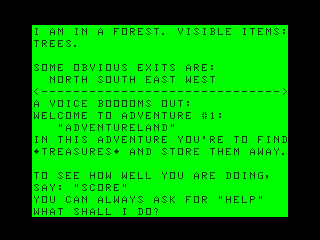
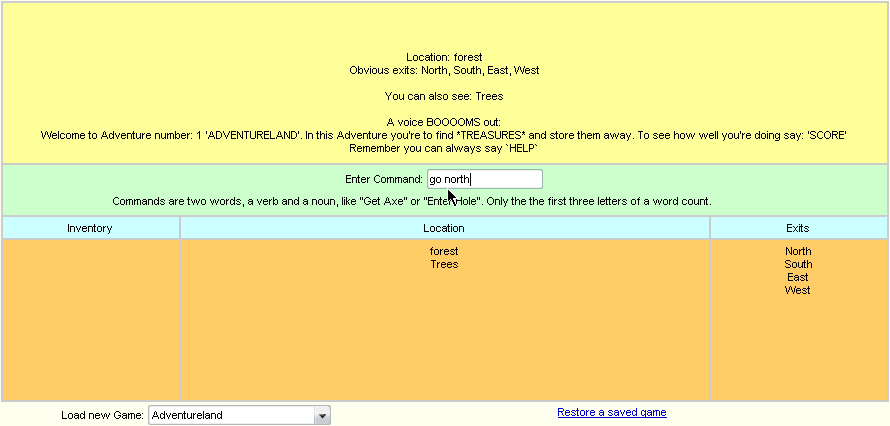
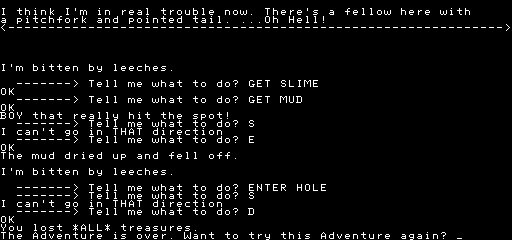
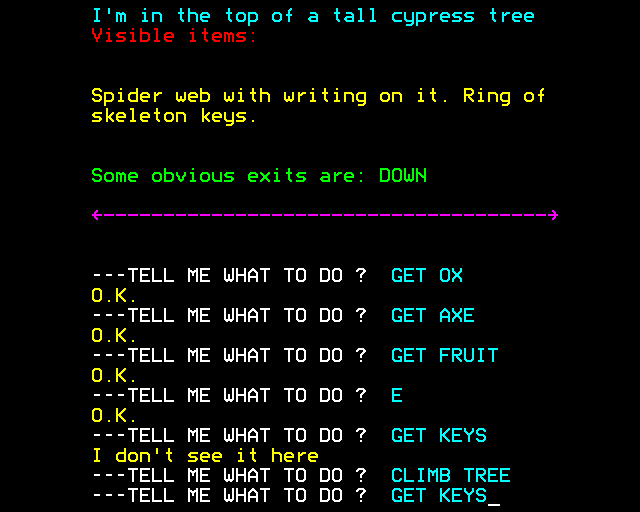
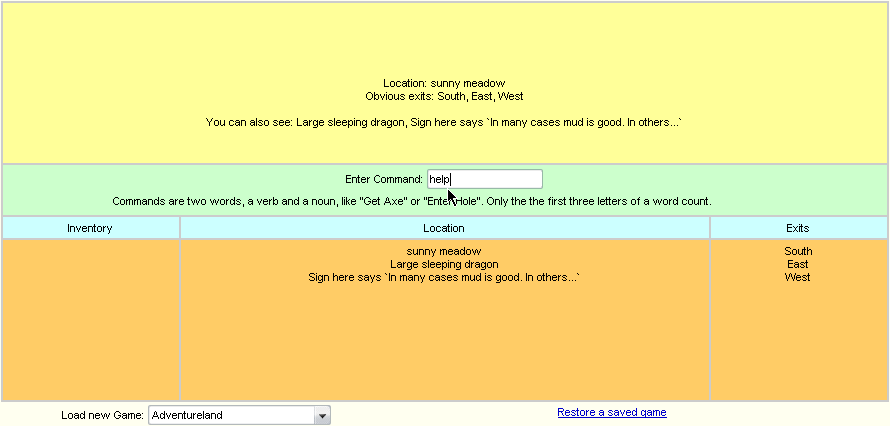



Reviews
There are no reviews yet.